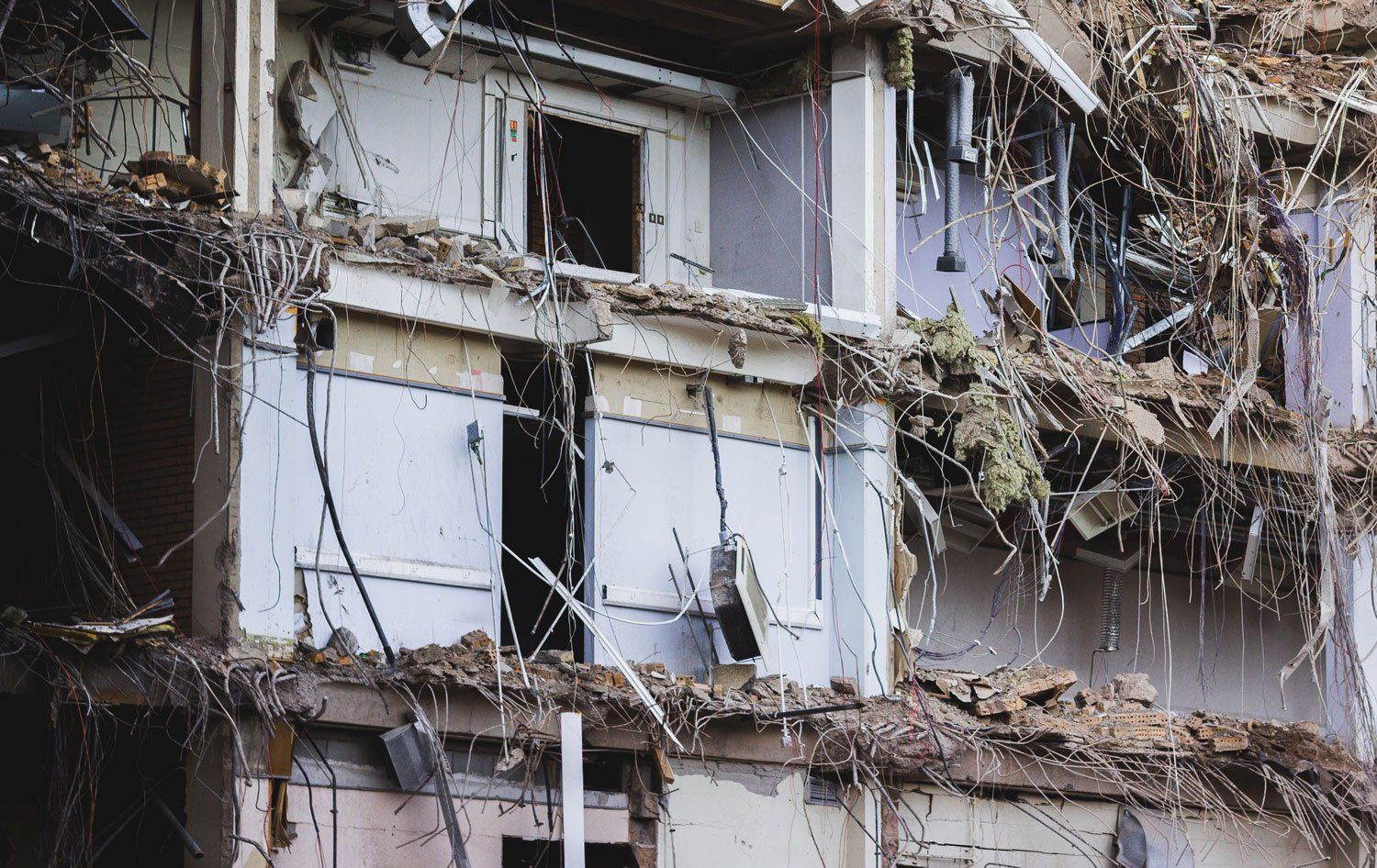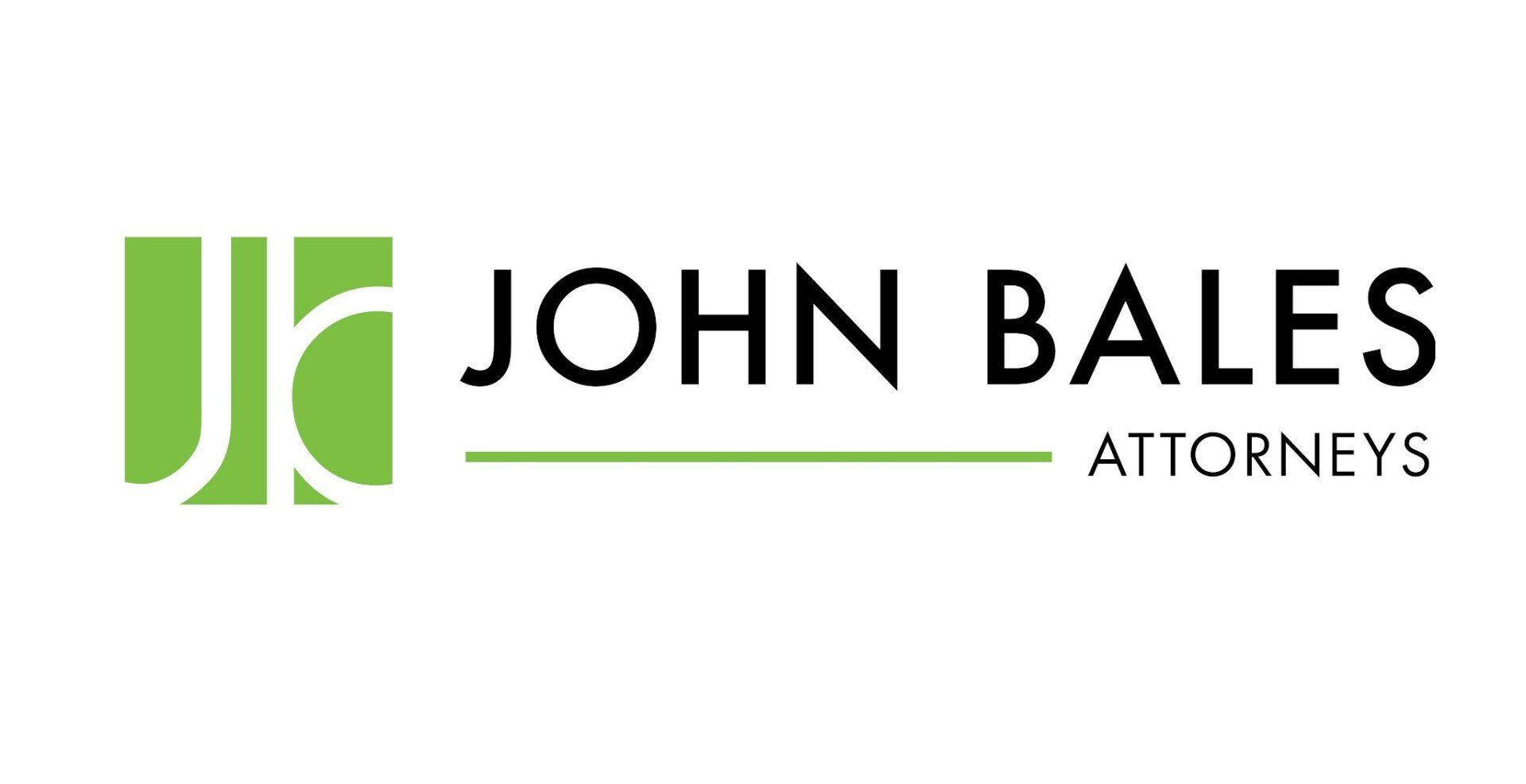Call Us:
800-CALL-JOHN
(800-225-5564)
Blog Layout
New Car Recalls Increase
Ken Clark • Aug 26, 2015

The More Expensive a Car is the More Likely it is to be Recalled
More money, more problems – this seems to be true when it comes to purchasing a brand new car. Records from the American Customer Satisfaction Index
(ACSI) show that the higher a price tag is on a vehicle, the more likely it is to breakdown. In the past year alone new car recalls increased a staggering 40 percent.
"While it is true that all cars are now much better than they were 10 to 20 years ago, it is alarming that so many of them have quality problems,”said Claes Fornell, ACSI chairman and founder.“The number of recalls is at an all-time high. This should not happen with modern manufacturing technology and has negative consequences for driver safety, costs and customer satisfaction."
Car Buyer Satisfaction Decreases Year Over Year
People are buying new cars to replace their older ones. This is great for the economy, but comes at a price. Prices are forced to go up due to the increase in demand for new cars. And since prices are going up, customer satisfaction is decreasing even more. Customer satisfaction has fallen from 79 percent to 75.3 percent on the ASI scale – a scale that ranges from 0 to 100. To gather this information about 70,000 people are interviewed for the ACSI yearly.
The results showed that foreign made cars and luxury brand cars are still the highest rated on the ACSI scale. Lexus
was a favorite among the top luxury brands to buy a car from, while Fiat Chrysler
scored the lowest. In addition, only two car brands improved in customer satisfaction in the past two years which are Acura
and BMW.
The John Bales Attorneys Team hopes that you are not the victim of any new car recalls or other defective products.
Source: Tampa Bay Times 2015 & American Customer Satisfaction Index
Share
Tweet
Share
Mail
John Bales Attorneys Blog

By Ken Clark
•
03 Jul, 2021
Storms, structural damage, construction, renovations and negligence can all contribute to catastrophic building failure, property damage, injury and death. Let us help you hold those responsible for your loss. No amount of money can help you regain what has been taken away, but we can make sure you and your family are financially supported and compensated for this travesty. Be on the side of justice and help us make sure this doesn’t happen to another family. Contact John Bales Attorneys for a free consultation. If we take on your case, you pay nothing until if/when we win you a settlement or verdict for compensation in your favor. You focus on healing. We’ll focus on holding negligent parties responsible for their actions. Major Structural Damage Revealed in Collapsed Miami-area Condo Inspection Reports On June 24th, 2021 during the early morning hours, the residents of Champlain Towers South Condominium experienced the unthinkable: a partial building collapse. As of the writing of this piece, the death toll of the 12-story building has reached 12, with 149 people unaccounted for. In the aftermath of this travesty, questions abound. Primarily what led to this event and whether or not it could have been prevented. Design Flaws and Failed Waterproofing According to engineers familiar with the structure, 900 days prior to the collapse, significant design flaws and failed waterproofing were noted as threats that could lead to ‘exponential damage’. These documents , released by the town of Surfside Florida include a 40-year unverified inspection report that is purported to have been delivered just 16-hours after the building’s collapse. September 6th 2018 Inspection Report Findings In an inspection report conducted by Frank Morabito, no settlement or bulging was reported at that time. However, of note was that 5% of balcony structural floor slabs showed signs of hairline cracking, and an estimated 8% of concrete slabs in the building plaza and garage showed signs of “concrete deterioration”. The report went on to describe further cracking and spalling of both exterior concrete walls and concrete columns, with one column revealing a wide crack more than 2 millimeters in width. Other notable issues in the report included waterproofing membranes that were “beyond their useful life” and required replacement. October 8th 2018 Inspection Report Findings On October 8th, 2018 a letter was remitted to the condominium associations treasurer detailing recommendations for repairs and potential hazards. One such recommendation detailed the potential consequences of failed waterproofing, noting: “major structural damage” referring to a concrete slab above a garage, and “failure to replace waterproofing in the near future will cause the extent of the concrete damage to expand exponentially.” The author of this letter went on to warn that the building’s design was flawed and that remediation would be complex, noting that this was a “systemic issue”. In the report “abundant” spalling and cracking of beams, walls, and columns in the garage under the tower was also detailed. In engineering and construction, ‘spalling’ is a term used to describe the deterioration of concrete. According to Morabito Consultants, “Abundant cracking and spalling of varying degrees were observed in the concrete columns, beams and walls" of the ground floor parking garage. The report continued on, stating that “Though some of this damage is minor, most of the concrete deterioration needs to be repaired in a timely fashion.” The Experts Weighing In According to personal injury attorney John Bales, of John Bales Attorneys, some of the issues detailed in the report could be indicative of other unforeseen problems. Columbia University professor Matthys Levy, author of “Why Buildings Fall Down: How Structures Fall”, noted that “The damage outlined in that report indicates that the problem is at the bottom of the building" and that "The problem obviously is the report is three years old and nothing was done until, you know, recently". The cost of such required repairs were (at the time) estimated to be around $9 million, although one resident of the building reported to USA Today that they recalled a discussion in which the costs could have run as high as $15 million. Another expert, professor of structural engineering at the University of California Los Angeles, John Wallace, was quoted as saying the catastrophic failure could be due to “…slow degradation over time, maybe the concrete wasn’t placed properly, it could be that the ground had moved somewhat causing it," he went on to say "It could be multiple different things” and that further investigation is warranted. Too Little Too Late Despite the findings of these reports being issued as early as September and October of 2018, it wasn’t until April of 2021 that plans to address them had been solidified. It appeared that some work had previously been done to the concrete slab that supported the plaza and pool, gut that the patchwork and crack repairs were found to have “….performed less than satisfactorily and needs to be completed again” as per the October 2018 report. Negligence and Catastrophe Early information regarding inspection reports and findings indicate that there may have been negligence on behalf of the condo association or building ownership. It appears that there were significant issues found with the building’s construction that posed a real and significant risk to its inhabitants. Although additional investigations are warranted, had these issues been addressed when found, this tragedy may have been avoidable. Who Could Be Held Responsible for This Building Collapse? In the event of a catastrophic building collapse, the first priority is medical treatment and survivor rescue. Often additional investigations are needed to determine who or what parties may be at fault or negligent. Such investigations often begin immediately, but can take considerable time to play out. Negligent Parties May Include: Associations (such as a condo association) Building owners Property management companies Construction companies Engineering and architectural companies And more… What Types of Damages May Victims Qualify to Be Compensated For? Building collapses often cause significant damage to person and property, including serious injuries and death. Common Types of Injuries We Represent Include: Wrongful death Suffocation Amputated limbs Crush injuries Broken bones Compartment syndrome Traumatic brain injury Spinal cord injury Paralysis And more… Types of Compensation You and Your Family May Be Entitled To If you or a loved one were the victim of a building collapse accident, you may be entitled to file a claim or sue for compensation for the following: Lost wages from time off work Lost future earning potential Pain and suffering Medical expenses Rehabilitation Physical and phycological therapy Property damage Loss of companionship And more…

By Ken Clark
•
22 May, 2021
Multaq and Liver Damage The heart rhythm drug Multaq® has been linked to severe liver damage, liver failure , and the need for a liver transplant in some users. What is Multaq used for? Multaq (dronedarone) is in a class of medications called antiarrhythmics, which are designed to help the heart to beat normally. Multaq is used to treat people who have had atrial fibrillation (a heart rhythm disorder that may cause fast and irregular heartbeat) or atrial flutter (a heart rhythm disorder that may cause the heart to beat very fast) within the past six months and who also have other conditions that increase the risk that they will develop heart problems. Multaq is marketed as decreasing the risk that people who have these conditions will need to be hospitalized to treat heart problems. Is Multaq dangerous? The U.S. Food and Drug Administration (FDA) warned that some patients using Multaq have suffered severe liver injury and liver failure leading to liver transplant . What does Multaq look like? Multaq is a white film-coated tablet that should be taken by mouth, usually two times a day with a meal. The standard dose is 400 mg twice a day, regardless of age or weight. There is no generic version. How many people have taken Multaq? The FDA reported that around 492,000 prescriptions were dispensed, and around 147,000 patients filled Multaq prescriptions at outpatient retail pharmacies in the United States since 2009. What is being done to protect consumers? The FDA said it would add a new warning about the risk for liver damage to the label of Multaq. The agency recommended patients should contact their doctor if they experience signs of liver injury, including nausea, vomiting, and fever. If doctors suspect toxicity issues, the patient should discontinue Multaq use and undergo a liver enzyme test. Do I have a case? If you took Multaq and were hospitalized with liver damage or liver failure, if you required a liver transplant, or if a loved one took Multaq and died from liver problems, contact our firm immediately. We want to help. The experienced lawyers at John Bales Attorneys are working to help Multaq liver damage victims get the help they need. Call us at 1-800-CALL-JOHN (1-800-225-5564) or click here to fill out a free online consultation form to learn how we may be able to help you and your loved ones. Darvon and Darvocet Removed from Market As of 2010, Xanodyne Pharmaceuticals, Inc., the maker of the painkiller drugs Darvon® and Darvocet®, has withdrawn these medications from the United States market at the request of the Food and Drug Administration (FDA). Why Are Darvon and Darvocet Considered Dangerous? Darvon and Darvocet contain a chemical known as propoxyphene , which is an opioid used to treat mild to moderate pain. It was first approved by the FDA in 1957 and is sold by prescription under various names alone (e.g., Darvon), or in combination with acetaminophen (e.g., Darvocet). Propoxyphene, however, has been linked to serious heart problems . What Is Being Done to Protect Consumers? The FDA has requested that every drug company remove all products containing propoxyphene from the market. According to the FDA, clinical data suggested the drugs put patients at an increased risk for serious or potentially life-threatening heart rhythm abnormalities . As a result of this data, along with other information, the FDA found that the risks posed by propoxyphene outweighed its pain management benefits. What Symptoms Are Associated with Darvon or Darvocet Use? The adverse symptoms of Darvon or Darvocet use include: • heart attack • heart failure • sudden cardiac death We Want to Help Our law firm is reviewing cases for which objective diagnostic test reports and records are available to document a patient was taking Darvon, Darvocet, or a propoxyphene-containing drug at the time of suffering heart failure, heart attack, or sudden cardiac death . Contact us today to learn how we may be able to help. Darvocet® and Darvon® are registered trademarks of Xanodyne Pharmaceuticals, Inc., and are used here to identify the products in question. This law firm is not associated with, sponsored by, or affiliated with the Food and Drug Administration or Xanodyne Pharmaceuticals, Inc. The lawyers of John Bales Attorneys believe that pharmaceutical companies should be held to the same high standards of care as medical professionals like doctors and hospitals. We believe that holding drug companies accountable for the quality and safety of their products plays a vital role in maintaining drug safety. If you or a loved one suffers from a drug injury, contact a John Bales Florida drug injury attorney today. Complete a FREE Online Consultation Form or call us toll free 1-800-CALL JOHN (1-800-225-5564) 24 hours, 7 days a week.

By Ken Clark
•
22 May, 2021
Originally posted July 15, 2011 According to a report in the South-Florida Sun Sentinel, the State disciplines insurance company adjusters far less often than public adjusters, who work for consumers. Here’s the story from Sun-Sentinel reporter Julie Patel: When Floridians complain that an insurance company's claims adjuster is mishandling, lowballing or delaying claims, there's a less than 16 percent chance the adjuster will be disciplined. When there's a complaint about a public adjuster -- one who advocates for consumers -- there's a 75 percent chance the state will crack down. Some say the disparity, based on state data for the past two years, reflects the clout of Florida's insurance industry, which contributes mightily to the campaign funds of state officials. Others say it shows just how unprofessional public adjusters are. The Florida Department of Financial Services takes citizen complaints about adjusters, whether hired by insurance companies or policyholders, and decides which ones to investigate. State officials said they don't pick on public adjusters. It's possible more complaints against insurers' adjusters were resolved without requiring an investigation. "A consumer complaint does not necessarily mean there was any wrongdoing by any party," Alexis Lambert, a spokeswoman for the department, wrote in an email. "Most complaints are resolved without having to open an investigation. For example, a consumer doesn't understand the process so they file a complaint but is then educated about the adjusting process and the complaint is closed." The lopsided ratio of investigations of public adjusters concerns Bill Newton, of the Florida Consumer Action Network: "Consumers need access to reliable adjusters, so company adjusters should be investigated and disciplined the same way public adjusters are." Barbara Zee, a homeowner in Delray Beach and board member of the Alliance of Delray Residential Association, said public adjusters should be held to a high standard because consumers hire them directly, but there shouldn't be such a disparity. "The influence … insurers have over the people in charge of regulating is so much greater [that] it would be difficult for those numbers to ever come close," she said. The Claims Adjusters No matter who hires them, adjusters evaluate damage and estimate repair costs after a policyholder files an insurance claim. There are 47,040 adjusters on staff at Florida insurance companies, including those based outside the state; 29,022 independent insurance adjusters who can be hired by insurers to work on claims; and 2,602 public insurance adjusters, who are hired by policyholders. Of those licensed independent and public adjusters, only those appointed by an adjusting firm can estimate claims. Public adjusters are generally allowed to charge 10 percent to 20 percent of a claim payout. Most adjusters are licensed by the state after they take exams or complete required courses. Attorneys don't have to have a license to adjust claims, and an insurance company can allow agents and, in some cases, employees to adjust claims without a license. More Complaints Against Public Adjusters The state received 246 complaints about public adjusters since February 2010 -- compared to 69 against insurers' adjusters, according to the state's Department of Financial Services, which handles and looks into the complaints. Another state agency, the Office of Insurance Regulation, regulates and investigates insurance companies. It is funded largely by fees and fines from insurance companies, a fact that some say could give the state an incentive to punish insurers. One reason there may be fewer complaints against insurance-hired adjusters: "Consumers may file a complaint against the insurance company rather than the individual adjuster," Lambert said. The theory is echoed by several insurance experts. "When there are problems with company adjusters, regulators tend to go after the company rather than the adjuster him or herself," Kenneth Abraham, an insurance law professor at the University of Virginia, wrote in an email. Many public adjusters work independently or as part of small firms "so when there are problems with them, there is no larger company to go after." The state received 27,138 claims-related complaints against insurers since 2008, Lambert said, adding they include those that may not have been substantiated. A spokesman for the insurance regulation office could not say how many were investigated. Harold Weston, a professor at Georgia State University's Department of Risk Management and Insurance, said regulators may think more public adjusters need more oversight. "Insurers have claims managers with control and responsibility over their … adjusters. There are claims manuals to be followed … and there is staff training. That's not to say company adjusters don't get the claims adjustment wrong sometimes. But there are a few levels of supervision that should correct many of the mistakes," Weston said. Issues with Insurance Adjusters After the 2004 and 2005 hurricanes, the number of public adjusters grew exponentially. Insurance companies said some of these consumer advocates filed fraudulent or inflated claims -- driving up premiums for all policyholders. State legislators responded by changing the laws that govern public adjusters. The insurance industry points out that adjusters on staff at insurance companies "do not charge a fee for their services, which means they have every reason to properly evaluate the claim and settle it fairly," said Lynne McChristian, a spokeswoman for the Insurance Information Institute, an industry trade group. Because public adjusters are paid a percentage of the claim, "the higher the claim payment, the bigger their payday," she said. "This gives unscrupulous public adjusters what could be an incentive to fraudulently inflate a claim." The Florida Association of Public Insurance Adjusters said there are some bad adjusters -- hired by insurance companies and citizens -- who should be investigated. David Beasley, a former president of FAPIA, said regulators told his group that many of the violations against public adjusters the past two years were administrative, such as late license renewals. "Public adjusters have a very small lobby presence compared to the insurance companies, and many people have no idea what they do," said Newton, executive director of Florida Consumer Action. "The result is they don't have much influence and have become a convenient punching bag for insurers and their legislative and regulator allies." What's a Consumer to Do? During the claims process, consumers should: • Request and keep all documents related to a claim and keep a journal, noting the dates of all calls, phone numbers and the names of people involved. Detailed notes and time-stamped photos of damage should be kept and a copy provide to any adjusters involved. • Check the licenses of the insurance company's adjusters, public adjusters, contractors and roofers. Ask them for references. Adjusters' licenses can be checked by clicking the "Licensee Search" link at myfloridacfo.com/agents/licensure or by calling the Department of Financial Services at 877-693-5236 or 850-413-3089. The Department of Financial Services also can tell you if there have been complaints about an adjuster. Contractors' licenses can be checked at myfloridalicense.com or by contacting the Department of Business and Professional Regulation at 850-487-1395. • Contact the Department of Financial Services with questions, to file a complaint or check the status of a complaint. Filing a claims-related complaint can serve as a step toward state-sponsored mediation, in which a state representative helps resolve a disputed claim. Lambert said consumers can contact a supervisor in DFS' Division of Consumer Services if their complaint is closed but they feel it warrants further investigation. The complaint then could be reviewed and referred to the Bureau of Investigation or another part of the agency. Some consumers who don't get resolution from the state file a lawsuit.
About Us
We Win Or You Pay Us Nothing
We have been providing expert legal advice to clients across the Florida for more than 20 years. We focus on people.


